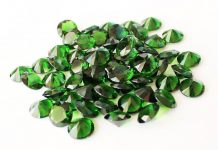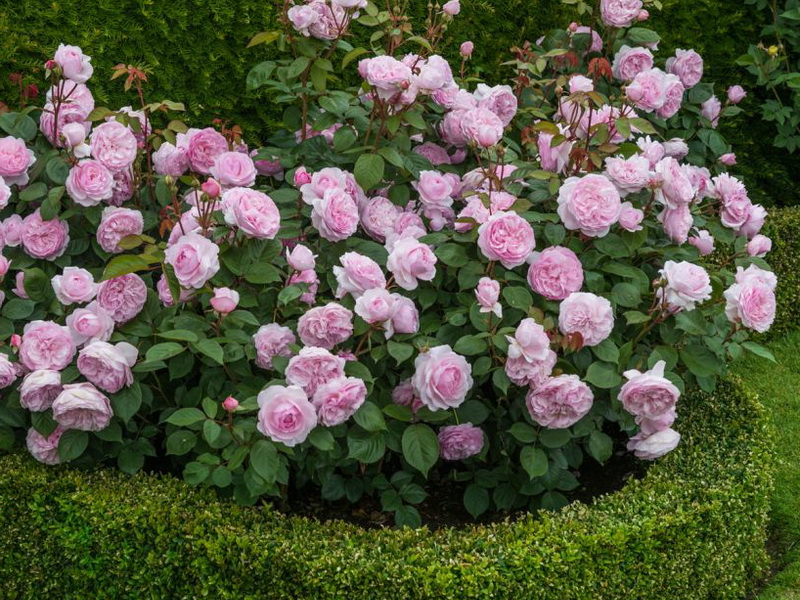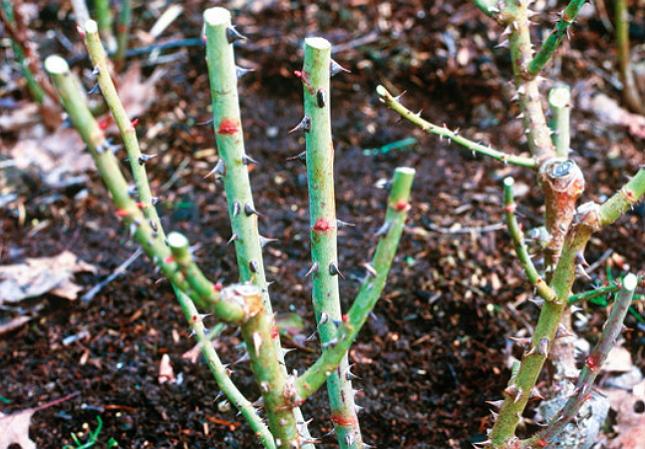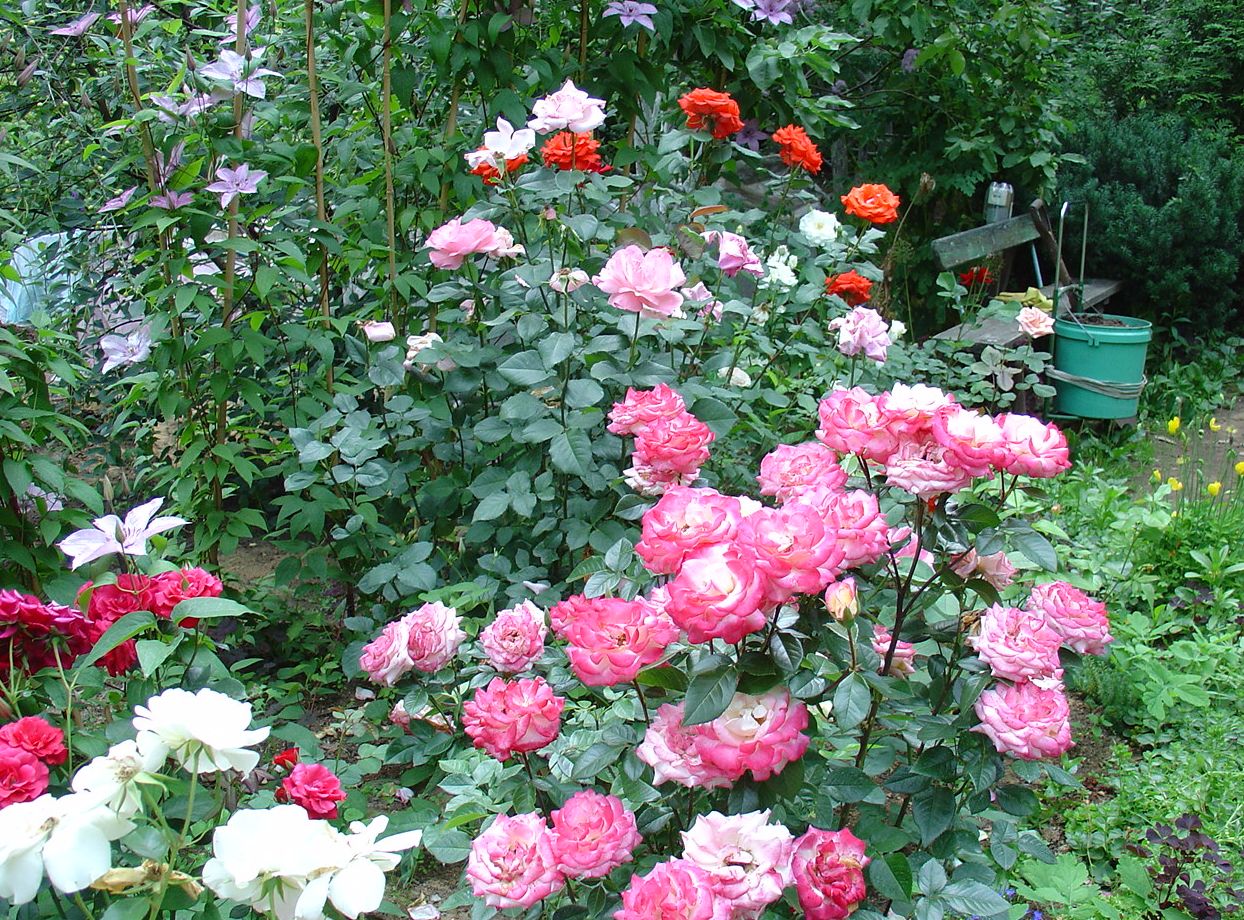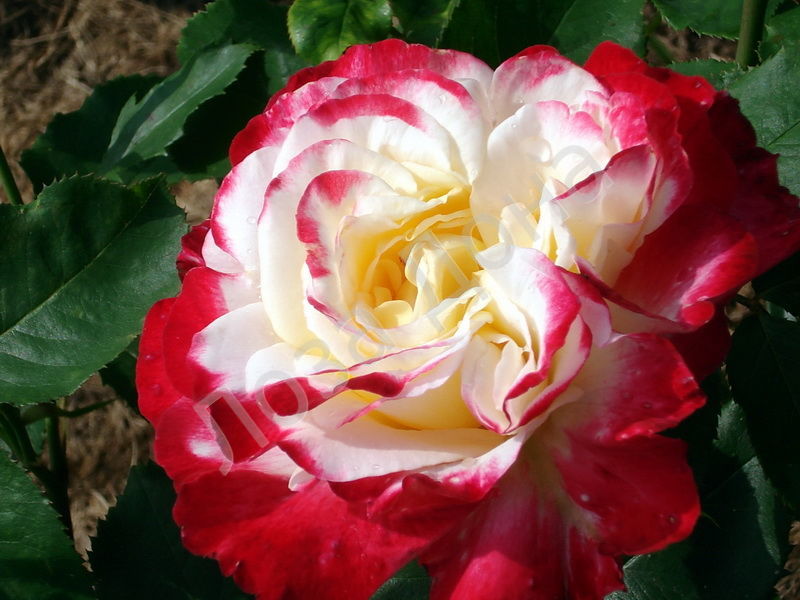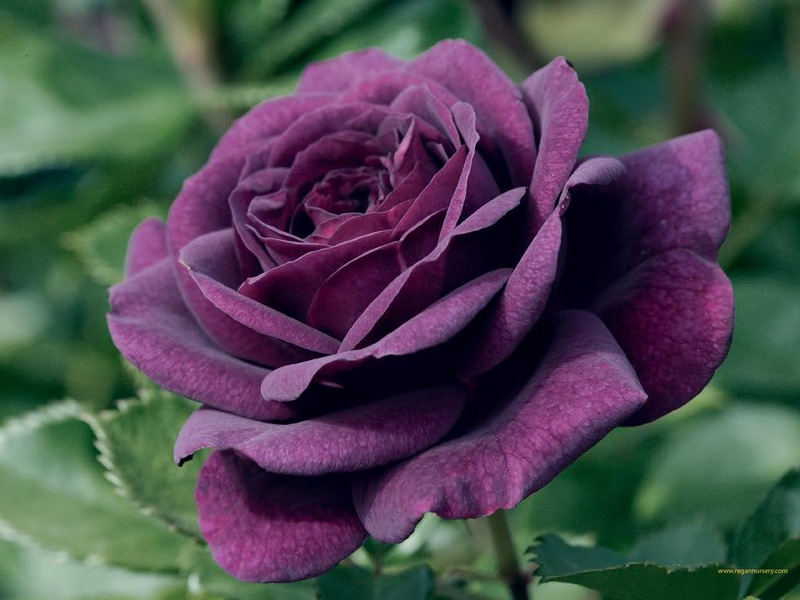Content
Rose - the most popular decorative flower. The luxurious palette of its colors, sophisticated fragrance attract attention and aesthetes and gardeners. You rarely find a cottage, a private plot, where there would not be even a few bushes of this queen of flowers. However, even a small rose garden requires attentive care. Rose - very naughty flower. To facilitate care, breeders have developed new varieties of hybrids that are resistant to diseases and temperature extremes, tolerate cold well. They crossed remontant roses with tea leaves and got wonderful hybrid tea varieties.
Shrubs tea hybrid roses are low, only 70-80 cm. The leaves are beautiful, of various shades, rather large. Flowers differ in various coloring, graceful addition and various aromas. There are varieties with large buds (up to 12 cm in diameter), solitary, double, but more often they are combined into inflorescences.
Varieties of hybrid tea roses
Consider the most common and favorite flower growers varieties of tea and hybrid roses:
Peer Gynt is a very bushy plant, up to 90 cm high. This variety is early. The flowers at the beginning of flowering are yellow with a golden sheen, then they become pinkish; large enough, not heaped. Crohn's incredibly thick. This species is adored by florists for long blooming, but prone to powdery mildew diseases.
Dame de Coeur is a tall plant (80-90 cm). Very disease resistant, frost resistant. In diameter, the flower reaches 12 cm and looks like a bowl, has velvety reddish-crimson petals. The aroma is weak, but pleasant, delicate.
Wendy Cussons - huge semi-double yellow-orange flowers of this variety attract florist with their brightness against the background of dark green leaves with a bronze tint. The most suitable variety for inexperienced gardeners, as it is easy to care for him.
Valencia is a fairly common variety. The height of the "bronze" bush - 90 cm with powerful yellow-orange flowers with a size of up to 13 cm in diameter. It is popular with gardeners because of its strong intoxicating aroma.
Tequila Sunrise is a low shrub, no more than 70 cm in height. This hybrid attracts attention with a combination of shiny green leaves with golden flowers with a red stripe that smell a lot. The plant is resistant to disease.
Super Star - flowers in this high shrub apricot or coral color, iridescent, like satin. Unfortunately, this variety is susceptible to powdery mildew.
La France is a flower with dense terry petals with a diameter of about 10 cm, the color of which varies from silver-pink from the top to bright pink from the bottom. Bushes of this type are cold-resistant and do not suffer from fungus.
Prima Ballerina - semi-double buds conical shape, the bush reaches one meter in height. This is a bed of roses with a strong aroma.
Alexander - red semi-double flowers on straight one and a half meter stalks. The best grade for cutting.
Landing
Planting method is identical for all varieties. First you need to choose the right place. It should be well lit and protected from drafts. Avoid areas with high groundwater levels. The best option - southeast garden area.
It is advisable to plant small trees or bushes next to the roses. They will save flowers from excessive ultraviolet radiation and drafts. The ideal soil for all roses is loamy and light. To ease the “heavy” ground, compost, sand and ash are added to it, and humus and clay are added to the “light” soil. Before planting, you must wait until the soil becomes warm. These hybrids do not tolerate cold soil. It is better to plant roses in early May. Seedlings can be purchased before, but in this case, you must be able to properly save them until planting. Dip them in wet sand and take them to the basement or place them in the ground and put them on the windowsill.

Before planting, trim the roots, check the location of the cut - it should be white inside. Then the seedlings are immersed in water for 30 minutes and only after that they are planted. Depending on the climate, hybrids are grown both indoors and outdoors. Before planting, the soil is poured over with water in which a growth activator tablet is dissolved (they are sold in stores for gardeners or flower shops). Then the roots are dug into the dug hole and covered with earth, periodically shaking the bush, and the soil is thoroughly compacted.


Hilling
To protect the lower kidneys from heat and cold, hilling is necessary. In no case should the seedlings be allowed to bloom immediately after planting. Therefore, the first five buds necessarily break off. This is done to strengthen and strengthen the root system. Only after the bush reaches 50 cm in height, it is given the opportunity to bloom.

Bloom
Mass flowering occurs in June-July and lasts 30-35 days, after it stops: early varieties do not bloom for 15 days, late ones - to 30. For the second time, the plant will delight with its luxurious buds right up to the late autumn.



If you need flowers for a bouquet, remember that you can immediately cut no more than 2 flowers from one bush.
 Watering
Watering
Health seedling will provide only the right care. Watering is often necessary so that the earth in no way was dried. But atthe same grown bushes water less often, but plentifully. Use water from the tap can not. Suitable rain or thawed. Try to pour a thin stream at the very root, as droplets on the leaves can cause fungal diseases.


Pruning
Infected and dead (frozen out) parts must be deleted. This is done in order to avoid the spread of the disease. Spring pruned stems when buds reach 8 mm. In stunted species, 15 buds leave 4 buds on the shoots, in tall varieties - 8 buds with a length of 30 cm. This is done in the spring. In the summer, wilted flowers are constantly removed, and in the fall - those shoots that have not ripened and disappeared, as well as all affected.
Top dressing
Roses are fed 3 times: in the spring - to stimulate growth, in the summer - for normal adaptation after planting and in the fall - to accumulate the necessary substances before wintering. Constantly can be fertilized with minerals with phosphorus, potassium, magnesium.
Diseases
Powdery mildew is a common disease of hybrid tea. For the prevention of suitable solution of baking soda: 40 grams per 1 liter of water. Processing is done in the spring before planting. Another common attack is aphid. To protect the plant from this parasite, it is treated with a solution of soap (1 piece per 10 liter of water, to enhance the effect, you can add a wormwood decoction). If these measures do not help, buy special chemicals.


Hybrid tea roses on photo
Hybrid tea roses, while maintaining their exquisite beauty, are adapted to our harsh climatic realities. They are sturdy, hardy, not capricious and feel great outdoors, and with proper care they will long delight with their beautiful colors, refinement and toneKim delicate aroma!

























